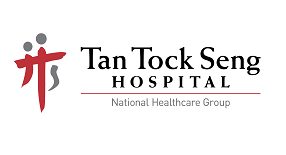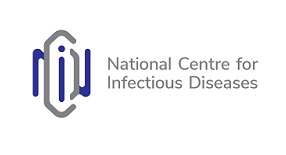The challenges faced during the COVID-19 outbreak had emphasised the importance of a seamless and integrated contact tracing capability across Tan Tock Seng Hospital (TTSH) and National Centre for Infectious Diseases (NCID) during not just the pandemic outbreak, but also peacetime operations.
With real-time ability to track and locate patients, staff and visitors, the Real-Time Location System (RTLS) enhances contact tracing capabilities, improves operational efficiency and optimises asset management. It is also capable of generating contact tracing and asset movements reports for analysis and decision making.

About Real-Time Location System
Real-Time Location System at a glance
Opportunity
TTSH had to rely on movement history obtained from interviews with patient or staff, and identify potential contacts with other people. This poses the risk of missing crucial information due to memory gaps and recall biasness.
To locate assets, nurses may have to make numerous calls and visits, causing frustration and hindering patient care. With RTLS, we can locate assets simply by pressing a few buttons, saving time and reducing staff stress.
To locate assets, nurses may have to make numerous calls and visits, causing frustration and hindering patient care. With RTLS, we can locate assets simply by pressing a few buttons, saving time and reducing staff stress.
Solution
With the integration of wireless access points, RTLS sensors and tags, the RTLS system can pinpoint locations and trace potential contact with infected individuals within two metres proximity.
In TTSH, RTLS tags are issued to staff, patients and visitors to detect in-contact range and the telemetry data is sent to RTLS servers for processing – which further updates real-time locations, patient alerts, and in-contact details.
In TTSH, RTLS tags are issued to staff, patients and visitors to detect in-contact range and the telemetry data is sent to RTLS servers for processing – which further updates real-time locations, patient alerts, and in-contact details.
Impact
Rapid contact tracing
Reduced contact tracing duration and contact tracers. Manual contact tracing interviews can be reduced or removed by comparing RTLS data against CCTV review.
Better resource optimisation
RTLS enables nurses to locate assets instantly, freeing up valuable time for quality care to patients.
Improve operational efficiency
For patient abscondment cases, RTLS is able to set off alarm to alert staff about the breaches.
Reduced contact tracing duration and contact tracers. Manual contact tracing interviews can be reduced or removed by comparing RTLS data against CCTV review.
Better resource optimisation
RTLS enables nurses to locate assets instantly, freeing up valuable time for quality care to patients.
Improve operational efficiency
For patient abscondment cases, RTLS is able to set off alarm to alert staff about the breaches.
Future Outlook
Potential capabilities of RTLS to enable better healthcare could be:
Automate patient actualisation
RTLS can facilitate smoother and faster patient journey by sending location updates to NGEMR.
Bed slot tracking
With RTLS, bed occupancy and types in bed slots can be monitored.
Tracking patients’ surgery time
With RTLS, patients’ surgery times can automatically be updated when entering and exiting the procedure room.
Automate patient actualisation
RTLS can facilitate smoother and faster patient journey by sending location updates to NGEMR.
Bed slot tracking
With RTLS, bed occupancy and types in bed slots can be monitored.
Tracking patients’ surgery time
With RTLS, patients’ surgery times can automatically be updated when entering and exiting the procedure room.
Frequently asked questions
-
What is a Real Time Location System (RTLS) solution?An RTLS solution enables the real time tracking of the location and movement of equipment and person throughout the hospital compound.
-
What is the difference between RTLS and RFID?An RTLS tag operates mainly on WiFi or Bluetooth capabilities while an RFID chip sends radio signals to a reader.
-
How far can RTLS sensors detect an RTLS tag?The detection range is typically about 2.5 metres in radius. Beyond that, WiFi triangulation detections will be adopted.
-
How do RTLS sensors look like?RTLS sensors are slightly smaller than the size of a wireless Access Point.
-
Do RTLS tags require power to operate?Yes. RTLS tags are powered by battery, in order to actively send location signals to sensors.
Resources
Partners




